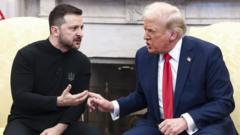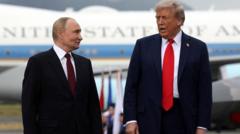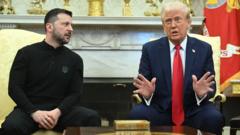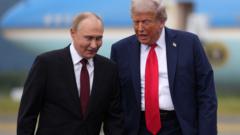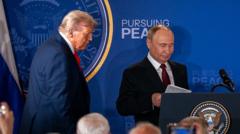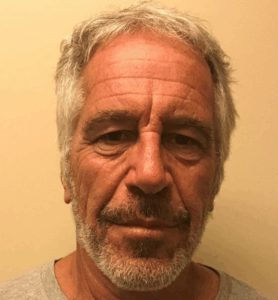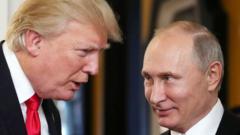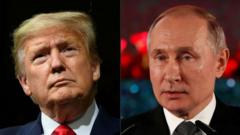This article examines the specifics of the order, its potential effectiveness, and the mixed reactions from experts and the pharmaceutical industry.
Trump's Executive Order Aims to Cut US Drug Prices: Will It Succeed?

Trump's Executive Order Aims to Cut US Drug Prices: Will It Succeed?
US President Donald Trump has announced a new executive order intended to lower prescription drug costs for Americans.
In a significant move aimed at addressing the high costs of prescription drugs in the United States, President Donald Trump has signed an executive order that seeks to align American pharmaceutical prices with those in other countries where medications are more affordable. Trump claims this action could reduce drug prices by "30% to 80% almost immediately.” However, healthcare experts and investors have expressed skepticism about these claims, pointing to a complex U.S. healthcare system that complicates price reductions.
One of the central issues is that U.S. drug prices are substantially higher than those in countries like Canada and Australia, often two to four times more, according to a 2021 government report. Both political parties have highlighted these costs, yet comprehensive solutions have remained elusive despite various attempts by both Trump and President Biden to tackle the problem, particularly concerning essential medications like insulin.
In his announcement, Trump attributed the ongoing issue to the strong influence of the pharmaceutical lobby, asserting that current practices allow other nations to benefit from lower prices while American consumers are left subsidizing these costs. He stated, "The drug lobby is the strongest lobby," emphasizing the need for change.
The executive order proposes several key measures, including granting the U.S. "Most Favoured Nation" (MFN) status regarding drug pricing, which would obligate pharmaceutical companies to match the lowest prices they offer abroad. Nonetheless, how this will be enforced remains uncertain, raising questions about compliance and accountability.
Stock market analysts reacted to the announcement with a cautious optimism, observing a temporary dip in stocks of major pharmaceutical companies followed by a quick recovery. This suggests that investors may not foresee immediate impacts from the executive order.
Challenges to the initiative abound. Some experts warn that if U.S. drug companies are compelled to comply with lower prices domestically, they may withdraw from international markets, resulting in potential drug shortages. Critics also argue that importing international pricing could jeopardize patient welfare in the U.S. by undervaluing the importance of medication availability.
Despite these hurdles, many Americans see lowering drug prices as a critical issue, with surveys indicating it ranks high among their healthcare concerns. While some experts are hopeful that the transparency efforts of this order may lead to progress, widespread and lasting reductions in drug prices remain in doubt.
The pharmaceutical industry has largely condemned the executive order. Leaders argue it could hinder innovation and threaten supply chains. They warn that linking U.S. prices to foreign markets may stifle funds essential for ongoing research and development. Some experts, however, believe there are alternative funding models for pharmaceutical innovations that could be explored.
Ultimately, while Trump's intention to address drug prices is clear, the practicality of his executive order and its long-term effectiveness are still open for debate. Observers are keenly watching to see how this complex issue unfolds in the coming months, especially as the pharmaceutical industry prepares to respond legally and politically.
One of the central issues is that U.S. drug prices are substantially higher than those in countries like Canada and Australia, often two to four times more, according to a 2021 government report. Both political parties have highlighted these costs, yet comprehensive solutions have remained elusive despite various attempts by both Trump and President Biden to tackle the problem, particularly concerning essential medications like insulin.
In his announcement, Trump attributed the ongoing issue to the strong influence of the pharmaceutical lobby, asserting that current practices allow other nations to benefit from lower prices while American consumers are left subsidizing these costs. He stated, "The drug lobby is the strongest lobby," emphasizing the need for change.
The executive order proposes several key measures, including granting the U.S. "Most Favoured Nation" (MFN) status regarding drug pricing, which would obligate pharmaceutical companies to match the lowest prices they offer abroad. Nonetheless, how this will be enforced remains uncertain, raising questions about compliance and accountability.
Stock market analysts reacted to the announcement with a cautious optimism, observing a temporary dip in stocks of major pharmaceutical companies followed by a quick recovery. This suggests that investors may not foresee immediate impacts from the executive order.
Challenges to the initiative abound. Some experts warn that if U.S. drug companies are compelled to comply with lower prices domestically, they may withdraw from international markets, resulting in potential drug shortages. Critics also argue that importing international pricing could jeopardize patient welfare in the U.S. by undervaluing the importance of medication availability.
Despite these hurdles, many Americans see lowering drug prices as a critical issue, with surveys indicating it ranks high among their healthcare concerns. While some experts are hopeful that the transparency efforts of this order may lead to progress, widespread and lasting reductions in drug prices remain in doubt.
The pharmaceutical industry has largely condemned the executive order. Leaders argue it could hinder innovation and threaten supply chains. They warn that linking U.S. prices to foreign markets may stifle funds essential for ongoing research and development. Some experts, however, believe there are alternative funding models for pharmaceutical innovations that could be explored.
Ultimately, while Trump's intention to address drug prices is clear, the practicality of his executive order and its long-term effectiveness are still open for debate. Observers are keenly watching to see how this complex issue unfolds in the coming months, especially as the pharmaceutical industry prepares to respond legally and politically.



